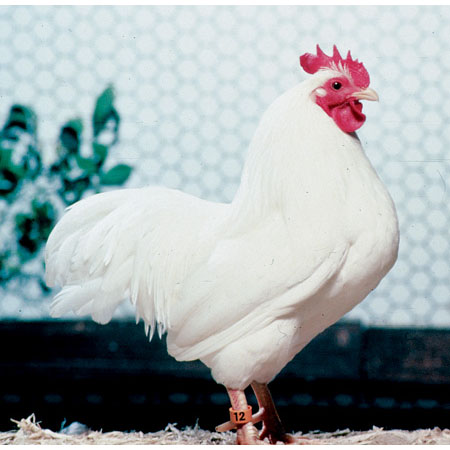Poultry Breeds in detail
India has made considerable progress in broiler production in the last two decades. High quality chicks, equipments, vaccines and medicines are available. With an annual output of 41.06 billion eggs and 1000 million broilers, India ranks fourth largest producer of eggs and fifth largest producer of poultry broiler in the world. The broiler production has also sky rocketed at an annual growth rate of about 15 percent at present. Broiler farming has been given considerable importance in the national policy and has a good scope for further development in the years to come.
Advantages of Chicken farming
- Initial investment is a little lower than layer farming.
- Rearing period is 6-7 weeks only.
- More number of flocks can be taken in the same shed.
- Broilers have high feed conversion efficiency i.e. least amount of feed is required for unit body weight gain in comparison to other livestock.
- Faster return from the investment.
- Demand for poultry meat is more compared to sheep/Goat meat.
Classification of Breeds of Poultry
Poultry Breeds are domesticated birds kept by humans for their eggs, their meat or their feathers. These birds are most typically members of the superorder Galloanserae (fowl), especially the order Galliformes (which includes chickens, quails, and turkeys).
Poultry Breeds also includes other birds that are killed for their meat, such as the young of pigeons but does not include similar wild birds hunted for sport or food and known as game. The word “poultry” comes from the French/Norman word poule, itself derived from the Latin word pullus, which means small animal.
A. American Class Poultry Breeds
a. Rhode island reds Poultry Breed
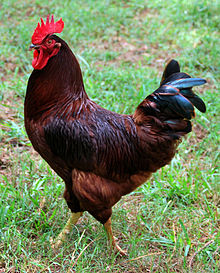
1)Poultry Breed Rhode Island Red originated from Rhode Island in New England after crossing with the red Malay Game, Leghorn and Asiatic native stock.
2) The bird has a somewhat long, rectangular body, which is also broad and deep.
3) The back is flat and the breast is carried well forward –characteristics, which make it a good meat producing, bird.
4) The plumage of the Rhode Island Red is rich dark or brownish red in colour, evenly distributed over the entire surface and is well glossed.
5) The wing when spread shows black both in primaries and secondaries. The tail coverts, sickle feathers, and main tail black both in primaries and secondaries.
6) The tail coverts, sickle feathers, and main tail feathers are also black. In the lower neck feathers of the female, there is also slight black marking at the base.
7) The usual colour of the breed is, brownish red, but buff, white and brown are not uncommon.
8) There are two varieties of this breed:
(1)Single Comb, and (2) Rose Comb. The characteristics of the varieties are identical except from the type of comb. In both cases the skin and shanks are yellow and the ear lobes red. The Single Comb is the more popular of the two.
9) The standard weight in kg is: Cock-3.8%, Hen-3.0, Cockerel-3.4 and Pullet-2.5 Colour of egg shells, brown to dark brown.
b. Plymouth Rock Poultry Breed
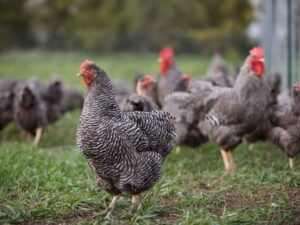
1) The Plymouth Rock is one of the most popular breeds in America, because it is a bird good size, with excellent fleshing properties and good egg laying abilities.
2) Birds of this breed have long bodies and have good depth of body and have single combs.
3) Mature birds weigh from 3.5 to 4.5 kg.
4) There are seven varieties of Plymouth Rocks, each distinguished by its plumage. They are (1) Barred, (2) White, (3) Buff, (4) Silver-pencilled, (5) Blue, (6) Partridge and (7) Columbian.
Barred Plymouth Rock:
1) In this variety, the male birds have black and white bars of equal width, 2)In female the white bars should be as wide as the black bars.
c. White Plymouth Rock Poultry Breed

-
- White Plymouth Rocks have been used extensively in broiler production.
- The plumage is white throughout and usually free from black ticking, brassiness and creaminess.
- The variety was developed from a sport of the Barred variety.
d. New Hampshire Poultry Breed
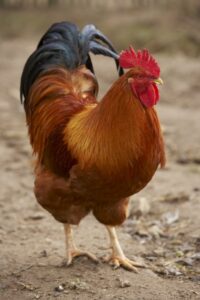
1) The shape of the body of the bird is less rectangular than that of the Rhode Island Red.
2) The plumage is chestnut red, it has a single comb.
3) In females the lower neck feathers are distinctly tipped with black.
4) The main tail feathers are black, edge with medium chestnut red. In both sexes the under colour is light salmon.
5) The breed is a good-producer of large brown shelled eggs.
6) The standard weight in kg Cock 3.8, Hen 2.7, Cockerel 3.4, Pullet 2.5
B. Asiatic Class Poultry Breeds
a. Brahma Poultry Breed
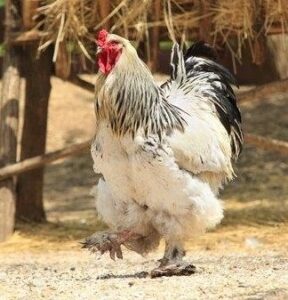
1) The breed was developed in India and exported to America and England about one hundred years ago.
2) The original birds were light in colour and have pea comb.
3) Brahmas are massive in appearance, well feathered and well proportioned.
4) Mature birds weight from 4 to 5 kg. Three varieties of Brahmas have been produced: (1) Light, (2) Dark, and (3) Buff.
b.Light Brahma Poultry Breed
1) The light Brahma is most popular because of its colour and its size.
2) Mature birds weight about 500 gm more than birds of the other two varieties.
3) The colour pattern of the light Brahma is similar to that of the Columbian Plymouth Rock and the Colombian White, the hackle feathers are black with white edging, and the main tail feathers are black, with the exception of top feathers of the female, which are laced with white.
4) The shanks, toes and beak are yellow.
c. Dark Brahma Poultry Breed
1)In the male, the hackle is greenish black with an edging of white.
2)Plumage in front of the neck is black.
3) The wing bow is white and the primary wing feathers and tail feathers are black.
4) In the female, the head and the upper neck are silver grey, the wing bows are steel-grey with black pencilling and the primary wing feathers are black with a narrow edge of steel –grey.
5) The back is steel-grey, with the same black pencilling as on the breast, body and fluff.
6) The tail is black except for the top two feathers, which are grey underneath. The shanks, toes and beak are yellow.
C. English Class Poultry Breeds
a. Sussex Poultry Breed
1) The breed developed in England about 200 years ago primarily as table birds. It has a long body, shoulders are broad with a good depth from front to rear and the bird in general has excellent fleshing qualities.
2) Males of this breed have a single comb and coloured beaks, shanks and toes.
3) The standard weights in kgs are Cock 4.0, Hen 3.1, Cockerel 3.4, Pullet 2.7, The varieties are described below
b. Light Sussex Poultry Breed
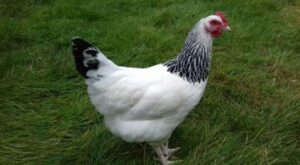
1) The plumage is quite similar to that of the Columbian Plymouth Rock and Columbian Wyandote.
2) This variety appears to lay well during summer months in India.
c. Red Sussex Poultry Breed
1) The plumage is deep rich red in both sexes.
2) The only exception to the Red are found principally in the primaries where the lower webs are black with a narrow edging of red, and in the secondaries, where the upper webs are black like that of the tail colour. 3) The under colour of all sections in both sexes is red with a slight bar of slate.
d. Australorp Poultry Breed
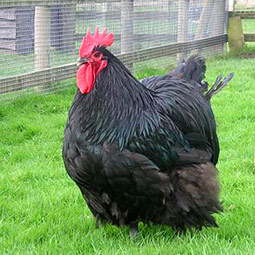
1) The breed was developed in Australia where for many years it has been bred principally for egg production rather than meat.
2) It is also very fleshy which makes it a good dual purpose breed.
3) The back is somewhat long, and the body slopes gradually towards the tail.
4) It has a good depth of body, and more closely feathered than the Orpington.
5) The comb is single, the body is black, plumage is lustrous greenish black in all the sections, the under colouring is dull black.
6) The standard weight of Australorp in kg is : Cock 3.8, Hen 3.0; Cockerel 3.4; Pullet 2.5.
e. Orpington Poultry Breed
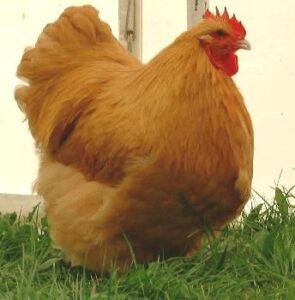
1) Orpingtons were developed in Kent in England.
2) They are long, deep and broad and well rounded, with a full breast and a broad back.
3) They are little more loosely feathered than breeds of American Class. Orpingtons have single combs.
4) Mature birds weigh from 4.5 kg.
5) There are four varieties: (1) Buff, (2) Black; (3) White, (4) Blue. Only the Buff Orpington has made much popularity in America.
D. Mediterranean Class Poultry Breeds
a. Leg horn Poultry Breed
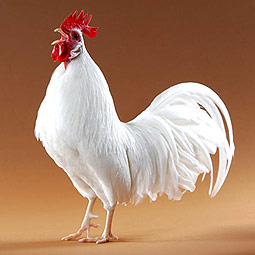
1) One of the important breeds classified as Mediterranean breeds, the Leghorn is by far the most popular.
2) It is the word’s number one egg producer. The breed originated in Italy and so far there are 12 varieties. Only three varieties, however, have become popular. They are (1) Single Comb White; (2) Single Comb Buff and (3) Single Comb Light Brown.
3) The breed is small, active, and reputed for the harmony of its various parts.
4) It is small and very compact in form, carries the tail rather low and has a small head with well set comb and wattles.
5) It has a relatively long back, prominent breast, and comparatively long shanks.
6) Leghorns are known for their stylish carriage and mature birds weigh from 2.0 to 2.7 kg.
b. Minorca Poultry Breed
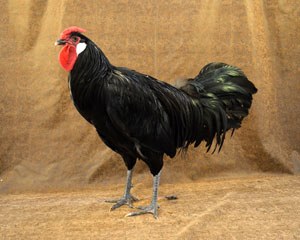
1)Minorcas, originally called red-faced Black Spanish, are the largest and heaviest of Mediterranean breeds of poultry.
2) Long strong bodies, large combs, long wattles, large white ear lobes, large and full tail moderately elevated with firm muscular legs set squarely under the powerful looking body, are the distinct characteristics of this breed.
3) The beak, shanks and toes are black.
4) An excellent producer of large white eggs. Colour of skin white; the eggshell is chalk white in colour.
5) The standard weight in kg: Cock 4.1; Cockerel 3.4; Hen 3.0; Pullet 2.8.
c. Ancona Poultry Breed
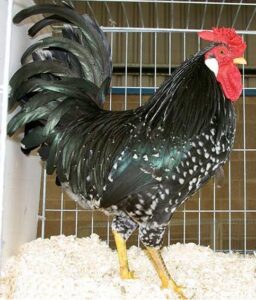
- Ancona chicken originated from Mediterranean area.
- Their head crest is like a rose.
- They don’t hatch their eggs.
- Lay white colored eggs.
- Lay about 200 to 250 eggs per year.
- An adult rooster weights about 2.5 to 3 kg and hen weights 1.5 to 2 kg.
- Lobe is white colored.
- There are no feathers in their legs.
d. Fayoumi Poultry Breed
- Fayoumi chickens were originated from Egypt.
- Their skin is yellow colored.
- No feathers in their legs.
- Lobe is white colored.
- They have similarity in size with Leghorn chickens.
- Lay about 160 to 180 eggs per year.
Duck Breeds
Pekin duck
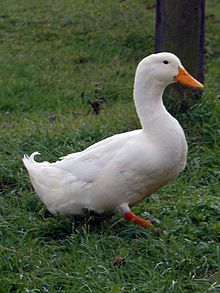
The Pekin duck (Anas Domesticus) has a large body, orange feet and beak and creamy white feathers. It was developed as a breed in China during the time of the Mongols. The Pekin duck is the preferred breed for commercial meat production in Australia, primarily due to its rapid growth rates. Overseas, Pekin ducks have achieved weights of up to 3.2 kg by 6 weeks of age, but in Australia the production figures are much lower and producers generally try to achieve the marketable weight of 2.85 kg in 6 weeks. It is considered to be a multi-purpose breed because it also has a high level of egg production. A further advantage is that this breed does not exhibit broody behaviour, which is apparent in some other breeds.
Muscovy duck
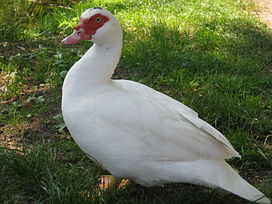
The Muscovy duck (Cairina moschata) originates from South America and is the only domesticated breed not derived from the Mallard. In reality Muscovies are not true ducks and are actually genetically more similar to geese than ducks. Features that distinguish the Muscovy include its bare face and the red caruncles positioned around the eyes and beak. They prefer to graze, have a slightly curved bill to harvest grass seeds, and egg incubation time is 35 days instead of 28. They do not have curled feathers on the upper tail that characterises drakes after about 4 weeks of age. It was once a popular breed for Australian production, but in many cases it has been replaced by the faster growing and more easily managed Pekin duck. The early development of the Muscovy is quite slow and it generally takes 10-11 weeks to achieve market weight. They are capable of producing 365 eggs in a year. The breed originates from Asia and can be identified by its tall, upright stance.
Khaki Campbells
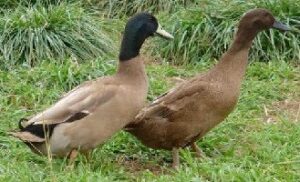
Khaki Campbells (Anas platyrhynchos) are predominately used for egg production, but are also good meat birds. The most distinguishing feature of this breed is its khaki colouration. The breed was developed in England in the early 19th century by crossing the Indian Runner with the Rouen. Khaki Campbells may produce up to 344 eggs in a year.
Mule Duck Breed
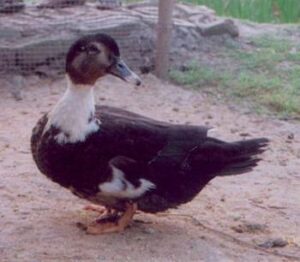
Mule (or Mulard) ducks (Anas platyrhynchos x Cairina moschata) are produced from the crossing of Muscovy ducks with common ducks. They are sterile hybrids, bred predominantly for meat and fat liver production. The lean meat typical of Mule ducks is desirable in health conscious societies.
http://www.agritech.tnau.ac.in/animal_husbandry/ani_chik_breeds%20of%20chicken.html


